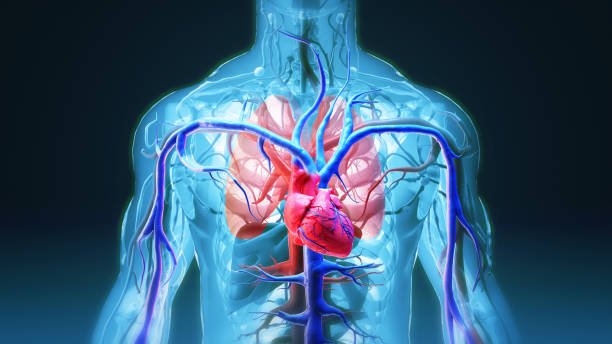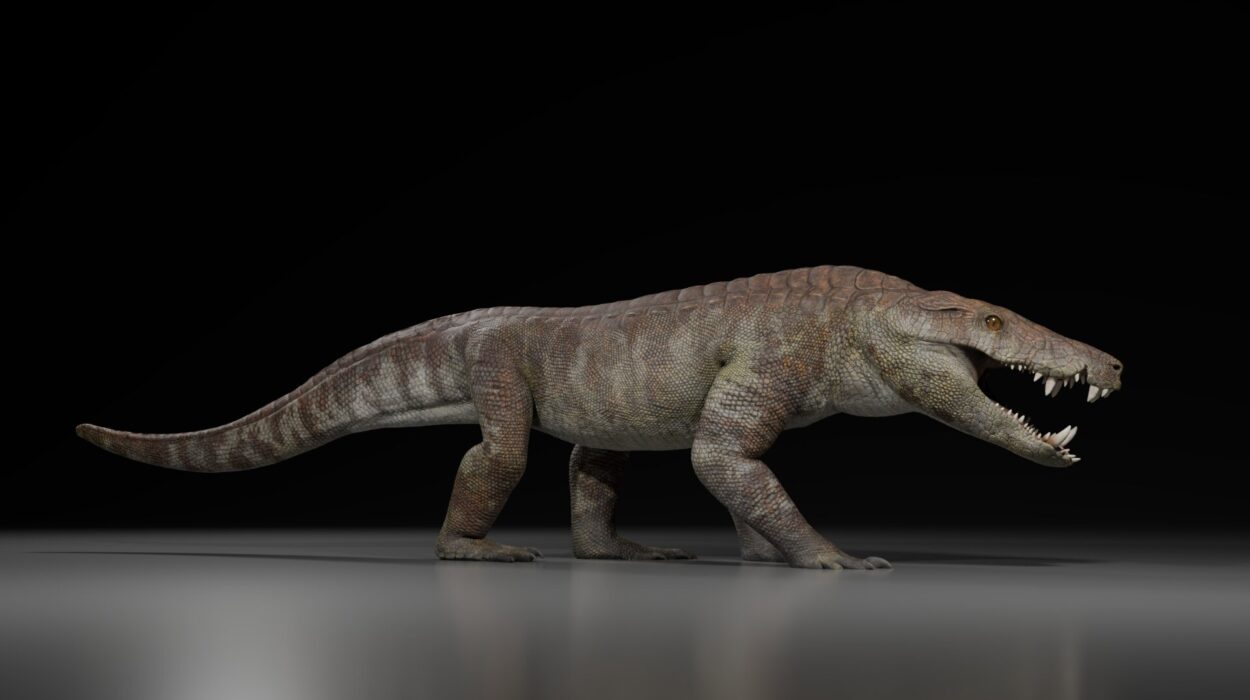Beneath your skin, beyond what the mirror reflects, lies a beautifully choreographed biological symphony. Every second of your life, even as you sleep, a vital system hums with activity—pumping, transporting, delivering, defending. That system is the circulatory system, a life-sustaining marvel that quietly powers your entire existence. You may not feel it consciously, but your heart is drumming with determination, your vessels are weaving through your body like an intricate highway network, and your blood is the ultimate multitasker—carrying oxygen, nutrients, hormones, and even your immune soldiers wherever they’re needed most.
The circulatory system is not just a pump and a few pipes; it is an intricate and intelligent infrastructure. It’s the biological internet of the body, moving data, resources, and messengers faster than any man-made network. It keeps every organ nourished, removes waste like a tireless janitor, and ensures that your brain, muscles, skin, and even the tiniest cells can do their jobs.
But what exactly is this powerhouse system? How does it operate? What secrets does it hold, and why is it so central to our survival? Buckle up, because we’re about to take a journey through the living highway inside you—one heartbeat at a time.
The Heart: Command Center of Circulation
At the heart of the circulatory system—literally and metaphorically—is the heart itself. This muscular organ, about the size of your fist, is a tireless engine that beats around 100,000 times a day. It’s astonishing when you think about it: without a single conscious command from your brain, your heart starts beating just weeks after conception and doesn’t stop until the end of life.
Structurally, the heart is divided into four chambers: the right atrium, right ventricle, left atrium, and left ventricle. Blood enters through the atria and is pushed out through the ventricles. The right side of the heart pumps deoxygenated blood to the lungs, where it picks up oxygen and gets rid of carbon dioxide. The left side then takes this oxygen-rich blood and pumps it to the rest of the body.
This elegant two-loop system is known as double circulation. The pulmonary circuit handles the lungs, while the systemic circuit serves the rest of the body. Valves ensure the blood flows in the correct direction, preventing backflow and maintaining rhythm. The heart’s pacemaker cells generate electrical impulses that keep the beat steady, like a metronome guiding an orchestra.
Despite being so powerful, the heart is surprisingly vulnerable. Diseases like coronary artery disease, heart failure, and arrhythmias can disrupt this rhythm, with potentially life-threatening consequences. That’s why understanding the heart’s role in the circulatory system is essential—not just for biologists, but for every human who possesses one.
Blood Vessels: The Highways of Life
Imagine if every road on Earth suddenly appeared inside your body. That’s close to the circulatory system’s network of blood vessels. Stretching over 60,000 miles in an adult human, these vessels could circle the globe more than twice if laid end to end. Their function? To act as the conduits through which blood travels—transporting oxygen, nutrients, hormones, waste products, and immune cells.
There are three main types of blood vessels: arteries, veins, and capillaries.
Arteries carry oxygen-rich blood away from the heart to the tissues. They are thick-walled and elastic, built to withstand high pressure from the heart’s pumping action. The largest artery, the aorta, exits directly from the heart and branches out like a tree to nourish the body.
Veins, on the other hand, return deoxygenated blood back to the heart. They operate under lower pressure and rely on valves and muscle contractions to keep the blood moving against gravity—especially in the legs. The superior and inferior vena cava are the major veins that bring blood back to the heart.
Capillaries are the microscopic connectors between arteries and veins. Their walls are only one cell thick, allowing for the exchange of gases, nutrients, and waste between blood and tissues. These tiny vessels form vast networks in every organ, from the brain to the tips of your toes.
This entire vascular system is dynamic. Blood vessels can constrict or dilate to regulate temperature, blood pressure, and oxygen delivery. They are lined with endothelial cells that play roles in clotting, immune response, and more. In many ways, these vessels are living tissues, not mere pipes.
Blood: More Than Just Red Fluid
Blood is often taken for granted, dismissed as just “red stuff.” But it’s far more than a colored liquid. Blood is a complex, multi-functional tissue composed of cells suspended in a fluid matrix called plasma. It serves as the circulatory system’s delivery truck, waste disposal crew, and emergency response team all in one.
There are three main types of blood cells:
Red blood cells (erythrocytes) carry oxygen from the lungs to the tissues and ferry carbon dioxide back for exhalation. Packed with hemoglobin, they give blood its red color and its remarkable oxygen-binding abilities.
White blood cells (leukocytes) are the soldiers of the immune system. They patrol the body, hunting for invaders like bacteria, viruses, and parasites. When you’re sick or injured, your white cell count surges as your body gears up for battle.
Platelets (thrombocytes) are the medics. When a vessel is damaged, they rush to the scene, clump together, and initiate clotting to stop the bleeding.
Plasma, which makes up about 55% of blood’s volume, is a golden fluid rich in proteins, hormones, electrolytes, and nutrients. It’s the medium in which the cells float and the messenger that carries signals throughout the body.
Blood is not just vital for physical survival—it’s also deeply symbolic. Across cultures and centuries, blood has represented life, sacrifice, kinship, and spirit. Scientifically, it’s every bit as sacred.
Oxygen and Nutrient Delivery: Powering Every Cell
Every cell in your body requires oxygen and nutrients to survive. The circulatory system ensures they get just that—quickly and efficiently. When you inhale, oxygen enters your lungs and diffuses into your blood. This oxygen-rich blood is pumped by the heart through arteries to every part of your body.
At the capillary level, oxygen and nutrients like glucose, amino acids, and fatty acids pass from the blood into the surrounding tissues. In return, carbon dioxide and metabolic waste enter the bloodstream, destined for excretion. This exchange happens billions of times every second.
The importance of this delivery cannot be overstated. A single interruption can be catastrophic. A blocked artery in the brain causes a stroke. A clot in a coronary artery leads to a heart attack. Inadequate oxygen supply, known as hypoxia, can rapidly impair brain function and damage vital organs.
Fortunately, the system is highly adaptive. Blood vessels can expand or reroute; the heart can beat faster or stronger; the bone marrow can increase blood cell production. The body is engineered to protect this delivery service with everything it’s got.
Waste Management and Detoxification: The Cleanup Crew
Just as important as delivery is waste removal. Cells generate byproducts—carbon dioxide, urea, lactic acid, and others—that must be cleared. This is where the circulatory system’s cleanup crew steps in.
Carbon dioxide is carried back to the lungs via red blood cells and plasma and is exhaled. Other wastes are filtered through the kidneys and expelled in urine. Some, like bilirubin, are processed by the liver and excreted in bile. The bloodstream is the vehicle that takes them where they need to go.
Without this continuous detox process, the body would become poisoned by its own cellular activity. Symptoms like fatigue, confusion, and even coma can result from waste buildup, as seen in kidney failure or severe liver disease. The circulatory system ensures that toxins are kept in check, like a silent custodian sweeping the halls after the day’s work.
Immune Defense: Circulating Soldiers and Sentinels
The circulatory system isn’t just about delivery—it’s also about defense. It forms the backbone of the immune system’s mobility. White blood cells travel through the bloodstream to areas of infection or injury, guided by chemical signals like a biological GPS.
When you get a cut, for example, platelets form a clot to prevent bleeding, while immune cells swarm in to destroy any invading pathogens. Specialized cells like macrophages engulf debris and dying cells, keeping the site clean. B-cells produce antibodies that tag enemies for destruction, while T-cells identify and eliminate infected cells.
The circulatory system is also how vaccines do their work. Once injected, the vaccine’s components are circulated to the lymph nodes, where immune cells learn to recognize the pathogen and prepare a response for future encounters.
Without this mobile defense force, even a minor infection could prove deadly. The circulatory system ensures that your immune warriors are always on the move, ready to strike.
Hormonal Communication: The Endocrine Expressway
Your body is a network of organs that need to communicate constantly—and hormones are the messengers. These chemical signals are secreted by glands like the thyroid, pancreas, and adrenal glands and enter the bloodstream, where they travel to distant target organs.
Insulin, for example, helps regulate blood sugar. Adrenaline primes your body for a fight-or-flight response. Estrogen and testosterone shape sexual development and reproduction. These hormones rely entirely on the circulatory system to get where they’re needed.
This hormonal highway enables the body to respond to changes in the environment, stress, emotions, and internal conditions. It helps maintain balance—or homeostasis—and supports growth, metabolism, reproduction, and mood.
When the hormonal balance is disrupted, disorders like diabetes, hypothyroidism, and Addison’s disease can occur. But when it works well, the circulatory system acts like a perfectly timed mail service, ensuring that each cell receives the messages it needs to function.
Temperature Regulation: The Inner Thermostat
Have you ever wondered how your body maintains a nearly constant temperature despite external conditions? The circulatory system is key. Blood helps distribute heat generated by metabolic processes throughout the body.
When you’re hot, blood vessels near the skin dilate, allowing more blood to pass through and release heat into the environment—a process called vasodilation. When you’re cold, those vessels constrict (vasoconstriction), conserving heat and redirecting blood to vital organs.
Sweating and shivering are part of this system too, triggered by the brain but dependent on the circulatory system’s ability to distribute signals and manage blood flow. It’s like having a thermostat with advanced climate control, adjusting in real time to protect your body’s core.
Development and Evolution of the Circulatory System
The circulatory system didn’t appear overnight. In the earliest multicellular organisms, diffusion was enough to move nutrients and waste. But as creatures grew larger and more complex, they needed a more efficient system.
Invertebrates like insects developed open circulatory systems, where hemolymph bathes the organs directly. Vertebrates, including humans, developed closed circulatory systems, where blood is confined to vessels and driven by a central heart.
In the womb, your circulatory system is one of the first systems to form. The fetal heart begins to beat just weeks after conception. At birth, major circulatory changes occur—like the closure of the ductus arteriosus—to transition from placental to pulmonary respiration.
This early development underscores the system’s importance. The circulatory system is literally foundational to life.
Conclusion: The Lifeline Within
The circulatory system is a masterpiece of biological engineering—a living infrastructure that connects every cell, every organ, and every function within your body. From the heart’s rhythmic pulse to the capillaries’ silent exchanges, from immune responses to hormone delivery, it is the lifeline that sustains you.
Yet it’s easy to forget how extraordinary this system is. We rarely pause to feel gratitude for the 60,000 miles of vessels, the billions of cells that travel our bloodstream, or the heart that never rests. But perhaps we should. For in understanding the circulatory system, we not only learn how our bodies work—we gain a deeper appreciation for the hidden miracles that keep us alive, moment by moment, breath by breath, beat by beat.






